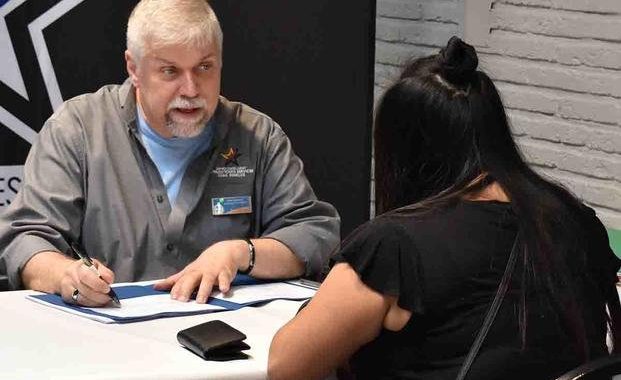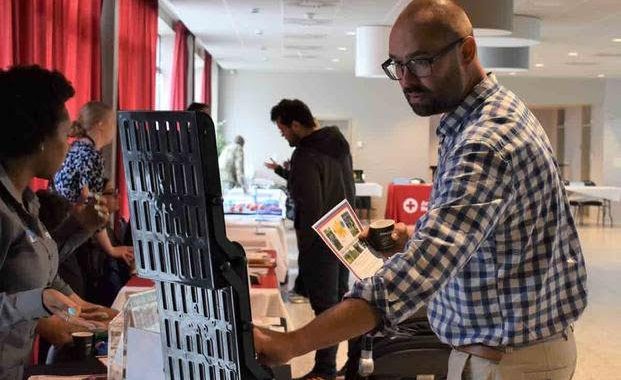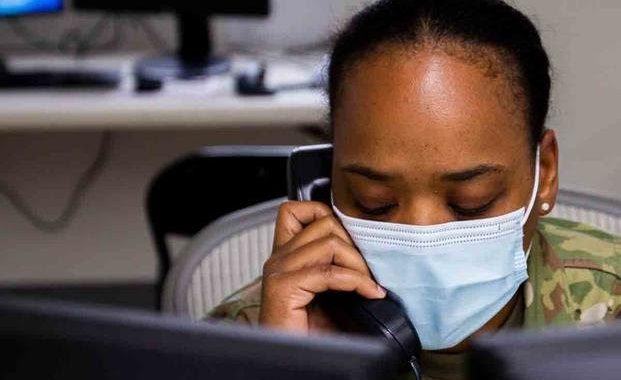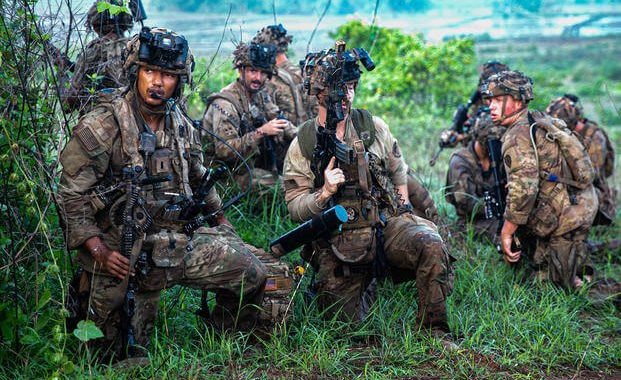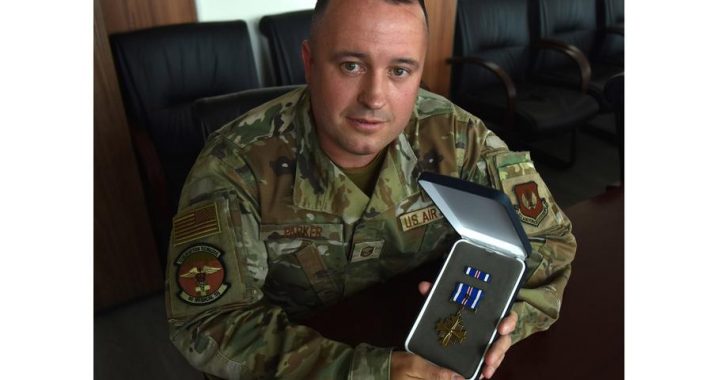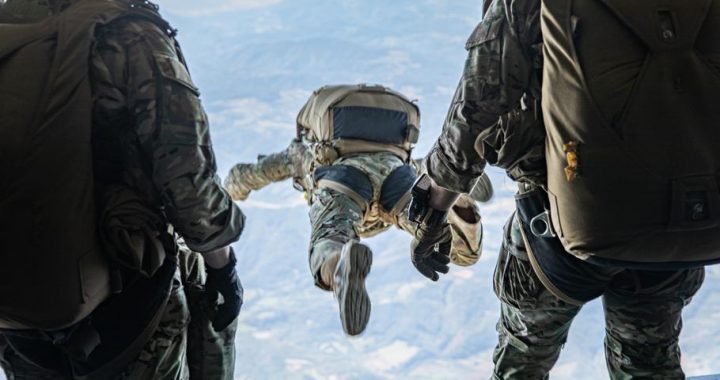SJAFB Airmen Build Partnerships with Hacking for Defense Students
4 min read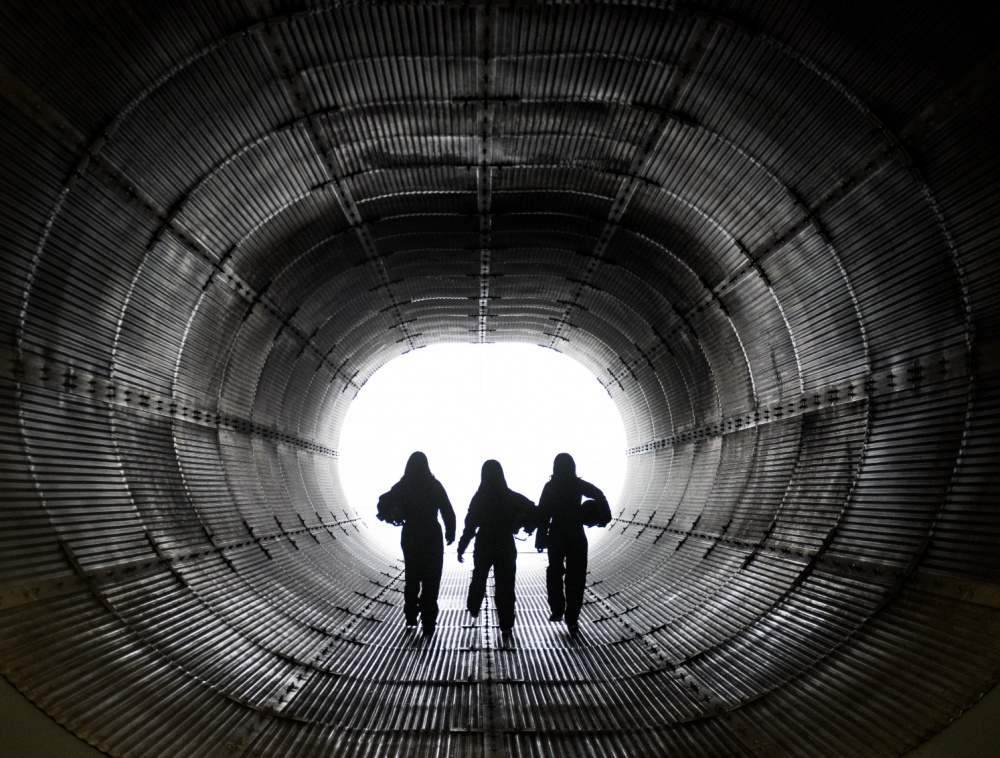
GOLDSBORO, NC, UNITED STATES
Story by Tech. Sgt. Vernon Young
4th Fighter Wing Public Affairs
A rainy day couldn’t stop an experience between the 4th Fighter Wing F-15E Strike Eagle aircrew and three Duke University senior students visiting Seymour Johnson Air Force Base.
Hacking for Defense is an education initiative sponsored by a U.S. Government proponent, the National Security Technology Accelerator at the National Defense University. Teams of 3-5 students from interdisciplinary backgrounds work together to solve real-world national security challenges given by problem sponsors inside the DoD and intelligence community.
The visit culminated a semester long study on the U.S. Air Force’s command and control (C2) efforts.
Just a few months prior, Col. Donn C. Yates, 4 FW commander, presented a communications objective to a classroom full of innovative students attending the H4D class at Duke. Among the group were Joy Duer, Mary Gooneratne and Linda Zhang. Their assignment was to develop a communication strategy for Air Force command and control. This study would give solutions on how aircrew would overcome communication issues such as jamming and other interferences downrange.
“From the moment we formed our team, we were immediately interested in finding a solution,” said Duer. “This may have been a once in a lifetime opportunity to provide some insight for the Department of Defense from our diverse backgrounds.”
Duer, an electric engineering major, Gooneratne, a biology major, and Zhang, a public policy major, pulled their different perspectives together to create an in-depth study team. Their education concentrations along with highly experienced military mentorship provide a wide range of depth to their analysis.
For 13 weeks, the group met weekly, working closely with their problem sponsors, mentors, and Team Seymour liaisons, to deliver a result of the study. In total, they analyzed over 100 professionals between the DoD, academic landscape and across multiple intelligence platforms for a deep dive into how communication could overcome blocking challenges.
“Each week, the students conduct interviews with Airmen to gather facts for the study,” said Dr. Tommy Sowers, Duke University H4D professor. “They don’t just come up with these topics on their own, they’re given a real problem from leaders that need an answer quicker, faster and better and they’re prepared for it.”
Their studies have provided leaders with data on how to improve issues for several DoD cases in the past.
“As a mentor, our team provided insight on the military life, real problems and our problem-solving processes to their team,” said Maj. Latch Francis. “We have benefited greatly from having intelligent individuals come inside of our walls for an in-depth analysis of our processes for improvements. The Air Force and the DoD as a whole improves when we open our doors to build partnerships.”
A full experience of the F-15E Strike Eagle provided another layer of experience for the students. Duer received an introductory medical screening and a brief by aircraft flight equipment explaining flight suits, g-force, helmets and weather prior to stepping for a flight.
Duer, had the opportunity to fly in the backseat with U.S. Air Force F-15E Strike Eagle pilot, Lt. Col. Boar, 334th Fighter Squadron, director of operations.
“Wow,” said Duer. As she sat in the backseat of the F-15E. “I never thought I’d have this opportunity and I’m very grateful. This experience has opened my eyes and confirmed my research.”
The flight provided a first-hand experience on how important communication could be in an environment that forces the pilot to rely on the instruments during flight.
“We were in the clouds for the initial part of the flight,” said Lt. Col. Boar. “Once we got through the clouds, the objective was to give her an experience of an Air Force fighter pilot, how communication happens in the air, while allowing her to see the world from our perspective.”
The aircrew flew near the Smokey Mountains in Virginia, coming within 1000 feet of the ground giving the passenger the feeling of an aggressive mission.
“I believe if more students had this experience, it would add so much value to both parties within the DoD and academia,” said Duer. “Before this class, I had no prior knowledge of C2 or even how the Air Force worked, but now I have a better understand of how communication efforts happen and a deeper appreciation for the men and women in service.”
The conclusion of their study will provide a full analysis of how the Air Force’s C2 could overcome jamming challenges and continue to maintain air superiority around the world.


